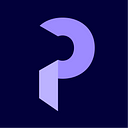How Do You Answer These Common UI/UX Design Interview Questions?
Interviews can be surprising predictable, if you already know the “playbook”
Written by Gyeongwon Kwak, social media content writer at Path Unbound. Edited by Stella Guan, Founder & CEO of Path Unbound.
Say that you finally landed an interview for the UX/UI design job you applied for — what’s the best way to prepare for the interview?
It can be quite simple, because interview questions are often surprisingly predictable, if you know the “playbook”.
Here are some of the common design interview questions (with suggested answers!).
- Tell us about yourself.
Whether you’re a designer or not, this is a question you will likely encounter frequently during interviews.
Companies want to know more about you so it’s important to briefly talk about your relevant experiences.
This can include past jobs, your educational background, any internships or volunteer experience.
A tip for answering this question is to start with the most exciting and impressive parts of your career instead of doing a chronological rundown of your past jobs or internships.
Start with the most exciting and impressive parts of your career instead of doing a chronological rundown of your past jobs or internships.
2. How would you define UX design / UI design?
Although a UX/UI designer should know what UI/UX is, companies want to make sure you know how to define it in your own way.
Don’t just memorize a textbook definition. Come up with your own definition based on your personal experience and what it means to you.
A helpful tip would be to define it in a way that someone from outside of the field can also understand.
A helpful tip would be to define it in a way that someone from outside of the field can also understand.
3. Walk us through the best pieces in your portfolio.
Companies want to see your strongest qualities and skills that you could bring to the table.
Tell a compelling story with your portfolio pieces. Keep the interviewer interested with a narrative story arc that includes the problem, challenges, solutions and results.
Talk about the creative process behind each piece, any challenges you’ve faced and what you did to overcome them.
4. What is your design process like?
Talk about where you get inspirations from for your design. You can mention anything from popular culture, blogs to books and conferences.
Then discuss your research process and how you adapt it to projects and clients.
This is a question where you need to tell a story about how you solve problems with design. It helps to use examples to make it more convincing.
5. How well do you work with a team?
Designers often work in teams so it’s important that you are able to demonstrate that you can work effectively with others.
Use an example from when you worked in a team environment and how you collaborated with others to ensure the success of the project.
Talk about your communication style, how open you are to feedback, and discuss your adaptability and flexibility.
6. Tell us about a time when a project didn’t go as planned. What did you do to fix it?
Companies want to know how you learned from mistakes.
Talk about what the problem was, why the problem happened, why the problem was challenging for you, what you did to overcome the problem, and what you took away from this experience.
Focus your story on how you were able to turn this weakness into a strength.
7. Why are you interested in working with us?
This is a culture fit question where companies want to see if you would fit in well with their team environment and whether you cared enough to do research about the company.
Do your research about the company/organization through their social media, LinkedIn, “About Us” or FAQ page, blog and product pages.
Be honest about your intentions and show your enthusiasm.
A tip we have for you is to reach out to current employees of the company on LinkedIn and ask them questions about the work culture.
Reach out to current employees of the company on LinkedIn and ask them questions about the work culture.
You can also learn a lot about the company by reading reviews from past employees on Glassdoor.
8. What do you think will be the next big trend in UX/UI design?
Companies want to see if you regularly keep up with UX/UI design trends. This is where you show your passion for what you do.
Talk about where you do your research, such as podcasts, books, blogs, webinars, online bootcamps or courses.
Remember to prepare for your interview by practicing how you would answer these sorts of questions but don’t memorize your answers. Just remember the key points you would talk about.
Also, make sure to bring your enthusiasm for the job to your interview. Show that you really want to be there.
Path Unbound is democratizing creative education one student at a time. We offer a free, full-length visual design course with 120+lessons, 50 exercises and on-demand 1-on-1 mentorship for anyone to get started on their design careers.
We believe in training students in individualized ways, unlike the typical bootcamp approach that resembles assembly lines. That’s why we launched Portfolio School, a 6–12 week bespoke and intensive program designed to help students elevate their portfolio to the highest industry standard so that they can stand out among a sea of cookie-cutter portfolios.
We will be launching School of Creative Business next, where we pair students with successful industry professionals and independent creatives who have achieved commercial success, who will mentor students on their career and business development. We strongly believe in making a great living doing what we love and we will help every student that join us achieve that goal.
